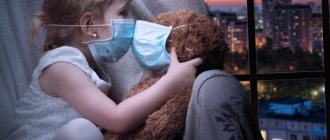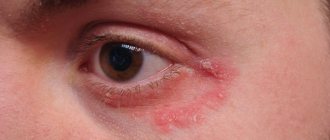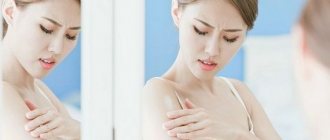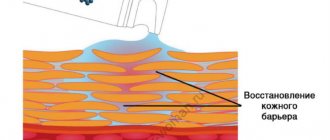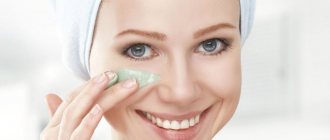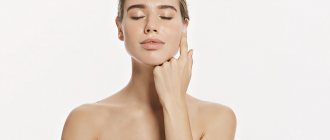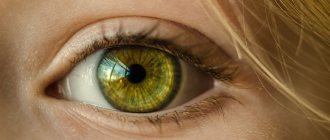Allergist
Bykov
Sergey Anatolyevich
18 years of experience
Allergist (immunologist), Candidate of Medical Sciences, member of the Russian Association of Allergists and Clinical Immunologists, member of the European Academy of Allergology and Clinical Immunology (EAACI).
Make an appointment
Up to 20% of the population are susceptible to allergic reactions that occur when trees and plants begin to bloom. The most powerful allergens are pollen from birch, alder, poplar, ragweed, quinoa and others. The period of birch flowering causes the most problems with well-being. Allergy to birch pollen is the most common. Manifestations of the disease are as follows: itching in the nasal cavity, the appearance of nasal discharge, frequent sneezing, nasal congestion. This phenomenon is popularly called “flower allergy.” In medical language, the name of the disease sounds like hay fever. The mechanism of allergy to tree and plant pollen is as follows. During the flowering period of flora, pollen is inhaled by humans and penetrates the mucous membranes in the nasal and oral cavities, as well as into the bronchi. In the human body, allergenic pollen is attacked by the defenses of the immune system. It is perceived as a foreign substance and is destroyed by the immune response. As a result of these processes, allergy manifestations occur.
Symptoms and signs of hay fever
If allergic reactions occur for the first time, then a person is quite capable of confusing this disease with a cold or conjunctivitis. A distinctive feature of flower allergy is seasonality. The body can only react to a certain plant. Then an allergy appears during the flowering period of this representative of the flora. However, it also happens that allergic manifestations are observed in a patient from early spring to late autumn.
Let us indicate the symptoms of an allergy to flowering:
- the patient has a stuffy nose and problems with olfactory function;
- a person may sneeze frequently or cough with a dry cough;
- eyes and eyelids swell, itch, tears flow from them,
- a rash may appear on the body and discharge from the nasal cavity;
- the nasal mucosa swells;
However, pollen allergy symptoms also have a different nature. This may include shortness of breath, weakness, general malaise, increased fatigue, depression, problems with appetite and sleep.
How an allergy to flowering manifests itself can vary from person to person. That is, for some it is 2-3 symptoms, while for another patient all the signs of the disease are present. The temperature rarely rises, although this phenomenon occurs in five percent of patients with hay fever. In addition, there are other phenomena. If plant pollen has penetrated the esophagus, then the manifestations of allergy are nausea and pain in the epigastric region. When the allergen penetrates the bronchi, suffocation is observed, similar to the symptoms of bronchial asthma.
Seasonal Allergy Symptoms
Signs of hay fever have characteristic features - long-term painful wave-like sneezing, redness and burning of the mucous membranes of the eyes, their swelling, discharge from the eyes and nose, unbearable itching in the nasopharynx, difficulty nasal breathing.
The most common symptomatology is acute inflammation of the mucous membranes:
- Eye.
- Skin.
- Nasopharynx.
Less common signs of hay fever:
- Disorders of the digestive system.
- Problems with the heart and blood vessels.
- Functional malfunctions of the genitourinary system.
- Nervous disorders.
Causes of occurrence and development
As mentioned at the beginning, pollen allergies occur as an immune reaction of the body. The weather factor is of no small importance here. Under certain weather conditions, the manifestations of hay fever intensify. Such factors include hot, dry and windy weather. If there is an optimal percentage of moisture in the air, then the manifestations of allergies are reduced. It is best for allergy sufferers to be outdoors after heavy rain. In this case, the walk will be as safe and useful as possible.
In addition to weather conditions, the time of day also matters. After 11 a.m. and before 6 p.m., there is the most pollen in the air. In the evening and at night, until 5 am, its content in the air is minimal.
List of sources
- Allergology and immunology. National leadership / Ed. R.M. Khaitova, N.I. Ilyina. - M.: GEOTAR-Media, 2009. 656 p.
- Goryachkina L.A., Peredkova E.V., Bzhedugova E.R. Treatment of hay fever // Attending physician, 2004, No. 3, p. 22.
- Gushchin I. S. Prospects for the treatment of allergic diseases: from antihistamines to multifunctional antiallergic drugs. IX Russian National Congress “Man and Medicine”. M., 2002, p. 224–232.
- Gushchin I. S., Kurbacheva O. M. Allergen-specific immunotherapy of atopic diseases: A manual for doctors. – M., 2002. – P.32.
- Ilyina N. I., Kurbacheva O. M. Modern pharmacotherapy of hay fever: safety and effectiveness // Consilium Medicum. – 2003.–T. 5. – No. 4. – pp. 226–231.
Risk factors
The risk group includes 10 to 20% of the entire population. People living in large cities have a high chance of developing the disease. For those who live in rural areas, the possibility of pathology occurring is much less.
Typically, adolescents and middle-aged people, up to 50 years old, suffer from hay fever.
The most common allergy is to birch blossoms. Also strong allergens are pollen from alder, hazel, poplar, ragweed, plantain, dandelion, chamomile, wormwood, etc.
Let us indicate what factors influence the appearance of hay fever:
- genetic predisposition. The probability of contracting this disease reaches 50% if both parents suffered from hay fever;
- unhealthy lifestyle (bad habits, unbalanced, unhealthy diet);
- bad ecology.
Pathogenesis
The pathogenesis of hay fever includes several links. The first link is the direct penetration of pollen into the body. It is based on the presence of a “permeability factor” in the structure of pollen, which facilitates the process of penetration of pollen grains through the epithelial layer of mucous membranes, as well as a violation of the barrier (protective) functions of the upper respiratory tract.
“Protection defects” are caused by:
- Violation of the protective function of granulocytes / macrophages .
- Lack of secretory IgA.
- Decreased production of a substance that reduces the activity of the permeability factor of pollen grains.
- Disorder of the function of the ciliated epithelium of the upper respiratory tract due to exposure to various physicochemical irritants.
As a result, as a result of a local allergic reaction and penetration of soluble fractions of allergens into the lymphatic/bloodstream, there is an increase in the level of sensitization of the body and the involvement in the allergic process of those tissues that did not have direct contact with pollen (lower respiratory tract, gastrointestinal tract, urinary system).
The penetration of pollen allergens causes the second - immunological phase of pathogenesis. In response to exposure to allergens (including pollen), individuals with an allergic predisposition experience increased synthesis of IgE.
Fixation of antigen-antibody complexes on mast cells/basophils, which have corresponding receptors on their surface, causes a chain of specific biochemical transformations of membrane lipids, forming a pathochemical phase, resulting in the production of anaphylaxis mediators ( leukotrienes , histamine , serotonin ), as well as activation of plasma kinins.
In turn, mediators, acting on the receptors of various target organs, induce the fourth - pathophysiological, manifested by swelling of the mucous membranes, spasm of smooth muscles and increased mucus production. Pathophysiological reactions are realized within 10-20 minutes after exposure to the allergen, and in fact, determine the clinic of hay fever.
Complications
It is worth noting that an allergy to tree blossoms is not as harmless as it seems at first glance. If appropriate measures are not taken, the disease may become more complicated. We list the possible complications in this case:
- severe fatigue, irritability;
- decrease in the body's defenses.
In the worst case, the following dangerous diseases can develop: serum sickness, hemolytic anemia, bronchial asthma, eczema, etc.
The most dangerous with hay fever are anaphylactic reactions with the manifestation of generalized urticaria, a papular itchy rash with red blisters on the body. The possibility of angioedema also poses a threat. This is the name for damage to the skin with loose subcutaneous tissue, which causes severe swelling. This condition threatens to impair the functions of tissues, organs, in the face and neck, and provokes suffocation. The most unfavorable complication of hay fever is anaphylactic shock. The possibility of such a situation occurring is small. However, if it does occur, the patient should be given emergency assistance.
ASIT forms
The essence of allergy treatment comes down to the introduction of small doses of the allergen to adapt the body. This can be done in two ways: sublingual (a tablet for lozenges under the tongue) and injection (an injection in the shoulder). In any case, treatment is carried out in two stages. The first is to achieve the maximum therapeutic dose, the second is to support the body until remission occurs. ASIT options: • year-round (for reactions to house dust); • pre-seasonal (for plant pollen); • seasonal.
Sublingual therapy can be done at home. Injections are carried out only under the supervision of a doctor. If allergic symptoms appear with the onset of dusting, medications should be stopped until remission is achieved.
Treatment
This disease is currently not completely curable. However, if you follow all the doctor’s recommendations, you can significantly reduce the manifestations of allergies and alleviate your condition during the flowering period of plants. Hay fever is treated with medication. Each patient is individually selected for certain medications. In addition to this method, hyposensitization is prescribed. The patient is introduced to the causative allergens. At first, the doses are small, but gradually the concentration of the drug increases. At the end of therapy, a decrease in a person’s susceptibility to pollen allergen is observed. This makes it possible to reduce the manifestations of the disease.
Classification
Depending on the location of the pathological process, the following are distinguished:
- allergic eye lesions ( allergic conjunctivitis );
- allergic diseases of the upper/lower respiratory tract ( allergic rhinitis / rhinosinusitis , bronchial asthma );
- allergic skin diseases - allergic (contact) dermatitis ;
- combined allergic manifestations ( rhinoconjunctival syndrome , allergic rhinitis + bronchial asthma/skin manifestations of allergies).
Based on the severity of clinical pollen allergies, it is customary to distinguish hay fever, which occurs in mild, moderate and severe forms.
Home remedies
If you are allergic, then you should try to protect yourself as much as possible from the effects of pollen on the body during the flowering of plants and trees. It is better not to go outside during the day, especially if the weather is dry, hot and windless. Only the attending physician can competently answer the question of what to do if you are allergic to flowering. However, as precautionary measures we can recommend:
- consumption of foods with anti-inflammatory properties (walnuts, fish oil, flax oil);
- taking a shower immediately after visiting the street. Gargle with clean water;
- keep your nasal passages clean. It is necessary for the nose to breathe well, and for this it is washed with a solution of water and salt.
Decoctions and infusions of medicinal herbs will help alleviate the condition of allergies to flowering dust. However, it is better to first consult with an allergist regarding their use.
Ambrosia, Allergy prevention
Summer is the most difficult time for people prone to allergies. It is especially difficult for them when ragweed blooms. Manifestations of allergies can exhaust a person prone to it over the course of a season, so that health problems will be remembered until next year. If you or your loved ones feel unwell during the flowering of herbs, it is worth getting to know better what it is - ragweed.
This plant belongs to the genus of herbs of the Asteraceae family. Originally from North America, from where it spread to almost the whole world. The genus includes about 50 species. Of these, only three are found in Russia.
Shoots appear in May-June. Ambrosia blooms in late July - early August. Flowering continues until October. Its small five-petalled greenish-yellow flowers are collected in spike-shaped inflorescences. The seeds begin to ripen in August.
According to the firm belief of allergists, ragweed pollen is one of the most powerful allergens, causing so-called hay fever - a painful reaction of the body to pollen entering the respiratory tract. In addition to the development of an allergic reaction, it can provoke the development of asthma. A dangerous form of allergy is anaphylactic shock and the likelihood of subsequent development of pulmonary and cerebral edema.
A distinctive feature of pollen is its ability to cause allergies even in healthy people who have never suffered from it. The allergy acquired in this way will manifest itself every summer.
When pollen gets on the skin or mucous membranes of adults susceptible to hay fever, the following symptoms of an allergy to ragweed appear:
- conjunctivitis, in which the eyes become red, itchy and watery;
- skin itching accompanied by redness;
- sore throat with a constant desire to cough and sneezing;
- allergic rhinitis with nasal discharge.
All this leads to the emergence of secondary factors of the disease. These include:
- causeless irritability;
- insomnia;
- frequent headaches;
- decreased concentration;
- depressed mental state.
In a person with an allergy to ragweed, the eyes are the first to be affected.
Allergy prevention
Even before symptoms of an allergy to ragweed appear, preventive measures should be taken. They will significantly reduce discomfort.
One of the effective preventive measures is a proper diet. During the summer, avoid the following foods:
- all sweets;
- watermelon, melon, peaches;
- sunflower seeds and oil from them;
- chamomile tea;
- pickles, smoked meats and marinades;
- any alcohol.
When ragweed blooms, all allergy sufferers need to follow these simple rules:
- Keep windows and doors closed to prevent pollen from entering your home;
- Install a special pollen filter in your air conditioner
- carry out wet cleaning of the room every day - you must thoroughly wipe off dust from all surfaces and wash the floor;
- take a warm shower before bed and wash your hair to prevent pollen from getting into your bed - this can lead to the development of hives;
- Always bathe your pets after walking them, as their fur carries a lot of pollen.
Preventing allergies to ragweed is one of the most effective measures to protect your health. To avoid dangerous consequences, consult a doctor if your condition worsens significantly. When the first signs appear, consult a doctor!
Myths and dangerous misconceptions in the treatment of hay fever
The worst misconception when allergies appear due to flowering in the spring is the belief that the disease can be cured on your own, without the help of a doctor. Only a specialist, after diagnosis, will be able to determine which plants you are allergic to. Uncontrolled use of medications or folk remedies can only worsen a person’s condition. A professional allergist selects an individual treatment regimen for each patient. Being not an expert in this field, it is difficult to determine the selection and dosage of drugs correctly. If hay fever is treated incorrectly, complications often begin. Then, instead of one disease, a whole complex of diseases develops, the cure of which will be much more difficult and longer in time.
Tests and diagnostics
Diagnosis of hay fever, as a rule, is not difficult and includes the study of an allergic history with the establishment of the characteristic seasonality of exacerbations, the presence of characteristic symptoms and the effectiveness of antihistamines. To confirm the diagnosis, skin tests (scarification, injection) with specific allergens and provocative tests (eye/nasal) are performed, which allows you to clearly identify the allergen. In some cases, other methods can be used - immunoenzyme, provocative, radiallergosorbent, etc.).
Sublingual therapy
Monitoring by an allergist is necessary only during the first use of a hyposensitizing drug. Next, the doctor gives the patient an individually developed scheme that takes into account his state of health and susceptibility to the trigger. Additionally, instruction is provided on the technique of reception, if it causes difficulty, and storage conditions.
Typically, Russian allergists prescribe Oralair (with meadow grass pollen) and Staloral (with birch pollen).
The patient must visit the clinic three times a year to confirm the effectiveness of the chosen method. Also, periodic monitoring will help identify unwanted reactions to the drug and, if necessary, replace it with injections.
What allergy medications are there?
Medicines used to prevent and relieve allergy symptoms are called antihistamines. Their mechanism of action is to block the production of histamine, a chemical that is normally present in the human body, is involved in immune processes and regulates various physiological functions. When an allergen enters the body, a large amount of histamine is released. This leads to an inflammatory response that manifests itself as allergy symptoms. In order not to harm yourself and restore the normal state of the body as quickly as possible, it is important to know which allergy medicine can be used and what the features and differences are between the presented drugs. There are three generations of antihistamines.
